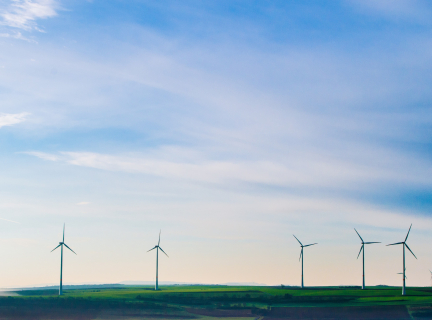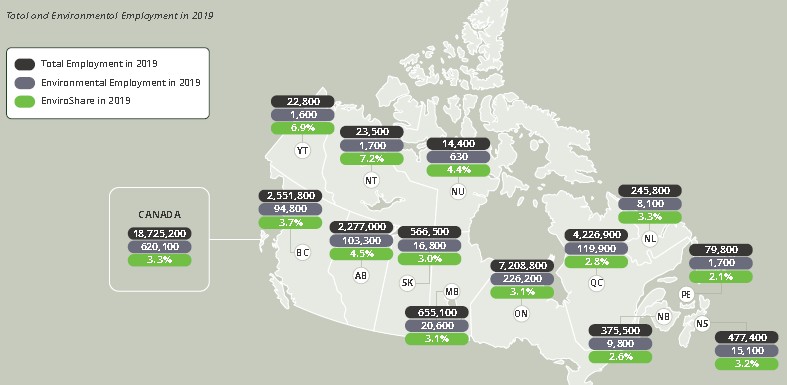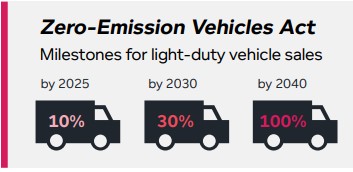Overview of the Green Economy

Introduction
Environmental Employment in BC in 2019

From Recession to Recovery: Environmental Jobs and Hiring Trends in the Decade Ahead September 2020
Green Economy includes seven sub-sectors:
- Local food
- Green building design and construction
- Green infrastructure, transportation and planning
- Sustainability services and education
- Land and water remediation and environmental consulting
- Materials management and recycling
- Clean technology, alternative energy and green building products
- More than 32,000 people work in the clean energy sector in B.C. and produce about $8 billion toward the province’s GDP.
- 25% of Canada’s ‘Cleantech’ companies are based in Vancouver
- Approximately 70 per cent of the 200+ cleantech companies located in British Columbia (BC) are based in Metro Vancouver, employing more than 3,500 people. Metro Vancouver is also home to the world’s largest hydrogen and fuel cell industry, with a 16 per cent global market share.
- Clean Energy BC identifies the following energy subsectors: windpower, solar, large hydro, tidal, run of river (small hydro), geothermal, biomass
Environmental Job Openings to 2025

Updated: Environmental Labour Outlook to 2025, Eco Canada
When it comes to replacement demand, the regional perspective mirrors the national outlook, as most net hiring over the next 10 years will come from retirement.
The majority of green jobs in BC are not new occupations but are, for the most part, created from existing occupations. They are jobs that are being re-designed to help reduce the impact of humans on the environment, to promote sustainability, and to encourage the efficient use of energy and resources. An example would be an automotive technician whose skills are shifting to include more work with hybrid and electric vehicles. B.C. is developing programs like Energy Step Code training and certification and Certified Retrofit Professional accreditation expanding job training for electric and zero-emission vehicles.
The provincial government has committed to a massive turnover of three million fossil fuel-powered vehicles. Under the new goals, by 2025, 10 per cent of new light-duty passenger vehicle sales in B.C. will be zero-emission vehicles, increasing to 30 per cent by 2030, and 100 per cent by 2040.

Driving.ca – Work From Ohm: B.C. government investing in EV mechanic training)
Green Economy Development in Vancouver
- one in 15 Vancouverites works in the green economy
- green and local food jobs represent roughly 6 per cent of all jobs in Vancouver
- Local food is the largest subsector of Vancouver’s green economy
- Green building design and construction is the second-largest sector
- the green builds sector’s sophisticated and expert workforce is the largest employer in Vancouver’s green economy, accounting for over 7,600 jobs
For more information on BC’s green economy see:
